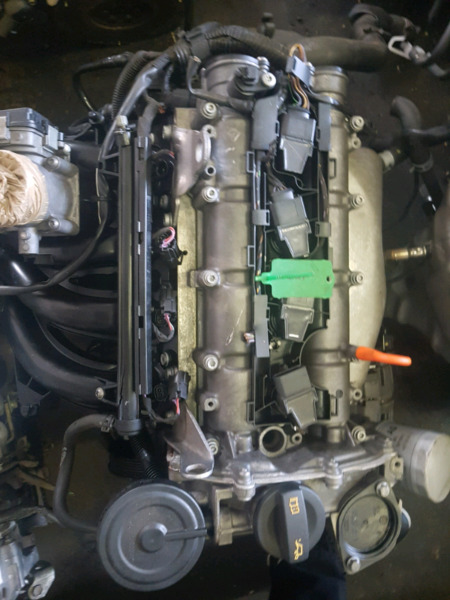Maintain smooth operations with a properly serviced clp engine.
Maintain smooth operations with a properly serviced clp engine.
Blog Article
Exactly How a Clp Engine Can Improve Performance in Numerous Industries
The advent of CLP engines notes a considerable change in functional performance throughout different markets, driven by their capacity to maximize gas intake and minimize downtime. As companies significantly focus on sustainability along with effectiveness, the function of CLP engines comes to be also more important.
Overview of CLP Engines
CLP engines, or Constant Fluid Propellant engines, represent a substantial advancement in propulsion innovation, particularly for room applications. These engines make use of a continual feed system that allows for the sustained expulsion of propellant, causing enhanced performance and performance contrasted to traditional solid or hybrid propulsion systems. By keeping a constant circulation of fluid propellant, CLP engines can accomplish much more exact thrust control, which is critical for maneuvering spacecraft in different mission scenarios.
The style of CLP engines integrates innovative products and cutting-edge fuel administration systems. clp engine. This results in lowered weight and raised reliability, crucial factors for long-duration area goals. The constant operation lessens the risk of burning instability, a common challenge in conventional rocket engines.

Benefits in Manufacturing
The production of Constant Fluid Propellant (CLP) engines provides a number of notable benefits that boost both efficiency and cost-effectiveness. One of the key benefits is the streamlined production procedure, which lowers the intricacy related to conventional propulsion systems. By using liquid propellant, suppliers can accomplish higher precision in engine performance, leading to enhanced power result and minimized waste.
Furthermore, CLP engines help with a higher degree of modularity, enabling easier combination into various manufacturing lines. This flexibility can substantially reduce preparations and improve general operational adaptability. Making use of CLP innovation additionally has a tendency to reduce the need for substantial upkeep as a result of less relocating components, which translates into lowered downtime and operational expenses.

Applications in Logistics
Leveraging Continuous Liquid Propellant (CLP) engines in logistics provides significant advantages in functional effectiveness and reliability. These engines supply a durable service for numerous transport needs, enabling the seamless motion of items throughout vast ranges. The fundamental style of CLP engines allows for constant power output, which translates into smoother and more predictable transport routines.
One of why not look here the key applications of CLP engines in logistics remains in heavy-duty freight transportation, where they can drive both ground and airborne automobiles. Their capability to maintain high efficiency under varying tons conditions ensures that shipment timelines are fulfilled, thereby improving customer fulfillment. Furthermore, CLP engines can be incorporated into automated logistics systems, promoting real-time monitoring and maximizing course planning.
Additionally, the sturdiness of CLP engines lowers upkeep downtime, enabling logistics business to optimize their functional abilities. This is especially helpful in warehousing procedures, where efficiency in dealing with and transferring items is website here crucial. As logistics continues to develop, the combination of CLP engines stands for a forward-thinking approach that not just enhances efficiency yet likewise supports the market's growing needs for reliability and speed.
Influence On Power Effectiveness
Exactly How do Continuous Fluid Propellant (CLP) engines improve power efficiency in transportation? CLP engines use a constant flow of fluid gas, enhancing combustion procedures and maintaining a secure drive result. This design reduces energy losses related to conventional burning engines, where fuel distribution can differ and lead to ineffectiveness.
The constant procedure of CLP engines enables for a more effective thermal cycle, resulting in greater certain impulse contrasted to conventional engines. clp engine. This translates to minimized fuel intake for the exact same quantity of work done, considerably decreasing functional costs throughout different transport industries, including aeronautics and maritime industries
Moreover, the capability of CLP engines to keep ideal performance under varying lots conditions minimizes the demand for frequent acceleration and slowdown, he said additionally enhancing fuel effectiveness. Improved power performance not just contributes to set you back financial savings but additionally leads to lower greenhouse gas exhausts, aligning with worldwide sustainability goals.
Future Trends and Innovations
Arising developments in Continuous Liquid Propellant (CLP) engine technology promise to change the landscape of transport effectiveness and sustainability. As markets pivot towards greener choices, CLP engines stand at the center, incorporating innovative materials and style methods that enhance performance while minimizing ecological influence.
One of one of the most promising trends is the adoption of crossbreed systems that combine CLP engines with eco-friendly energy sources. This harmony can enhance fuel usage and reduce emissions, straightening with global sustainability objectives. Additionally, improvements in computational fluid characteristics (CFD) are helping with the design of even more aerodynamically effective engines, leading to minimized drag and improved gas performance.
Additionally, the advancement of wise monitoring systems is set to improve functional effectiveness. These systems take advantage of data analytics and IoT innovation to maximize engine performance in real-time, ensuring that the engines operate within their most efficient specifications.
As research study proceeds to explore alternative propellant formulas-- such as biofuels and synthetic gas-- the future of CLP engines looks encouraging. By utilizing these technologies, industries can not just boost their performance however additionally contribute substantially to a cleaner, much more sustainable future in transport.
Conclusion
In final thought, CLP engines stand for a considerable improvement in efficiency across several markets. Their capability to maximize fuel consumption and lower operational costs, combined with a constant feed system, enhances power outcome and functional integrity. The assimilation of sophisticated products and fewer relocating parts decreases upkeep demands, while alignment with sustainability objectives positions CLP engines as an essential technology for the future. Continued advancement in this area promises further enhancements in efficiency and ecological performance.
Report this page